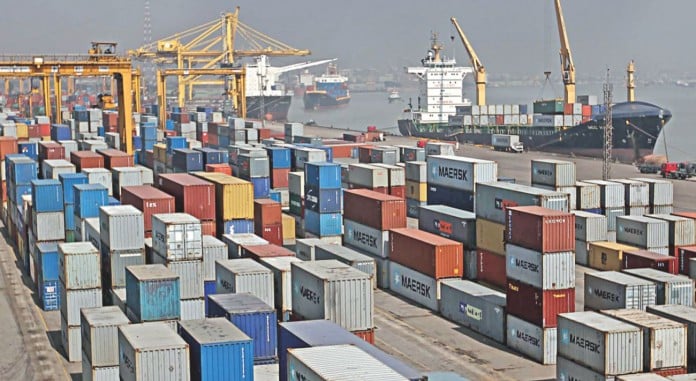With the clock ticking toward 1 August, anxiety is mounting in Bangladesh’s export sector as the threat of a steep 35% tariff on shipments to the United States draws closer. For the country’s $48 billion export economy—over 85% of which comes from the ready-made garment (RMG) sector—the looming tariff poses a potentially destabilising blow.
Washington has yet to make a final decision, but hopes are pinned on a last-minute breakthrough as a new round of trade negotiations begins this week. Bangladesh’s Commerce Adviser and Commerce Secretary have travelled to Washington, DC, for in-person talks scheduled from July 9 to 11—possibly the final opportunity to urge the US administration to reconsider or modify the tariff regime.
The United States accounts for nearly 18% of Bangladesh’s total exports, with garments dominating that share. A sudden cost burden of 35% could dramatically weaken Bangladesh’s competitiveness against rivals like Vietnam, Mexico, and India, many of whom benefit from favourable trade arrangements with the US.
Exporters fear that if the tariff is imposed, orders may shrink sharply, and over time, sourcing patterns could shift away from Bangladesh. Such a disruption would extend beyond the factory floor: the RMG sector employs over 4 million workers, most of them rural women, and supports a wide ecosystem of suppliers, transporters, and informal service providers.
A shock of this scale could lead to layoffs, delayed wages, and a drop in foreign exchange earnings—at a time when the economy is already contending with inflation and pressure on reserves.
Industry associations, meanwhile, have been urging the government for a stronger and more coordinated response. Among their concerns is the absence of a dedicated lobbying presence in Washington. Unlike other nations, Bangladesh has not retained professional advocacy firms to defend its trade interests at the highest levels of US policymaking.
In recent days, the BGMEA has sought a meeting with Chief Adviser Muhammad Yunus to press the need for immediate appointment of trade lobbyists who can help avert the crisis.
The economic case for Bangladesh is compelling. Still listed among least developed countries (LDCs), Bangladesh argues that the proposed tariff would be excessive and detrimental to its development journey. The US imports over $8 billion in goods annually from Bangladesh but exports less than a quarter of that amount in return—highlighting a lopsided trade balance. At the same time, Bangladesh continues to offer preferential access for US goods, including agricultural commodities and aviation equipment.
Despite these arguments, negotiations have progressed slowly, partly due to a 90-day extension granted earlier by the Trump administration. Industry insiders say that critical time was lost due to weak communication and lack of strategic coordination.
Officials are still hoping for a compromise—perhaps a grace period or an exemption for garments. But time is running out. If Bangladesh fails to secure relief, the 35% tariff will automatically take effect on 1 August under an executive order signed in April.
The consequences of inaction could be grave. A prolonged disruption in US-bound garment trade would undercut industrial production, employment, and external account stability. Economists warn that Bangladesh’s heavy reliance on garments makes it highly vulnerable to external shocks—and this could be the most severe in years.
In the longer term, the crisis has renewed calls for structural reform. Diversifying export destinations, enhancing product sophistication, and expanding non-garment sectors have long been discussed, but urgency is now unavoidable.
For the moment, all attention is on Washington, where the outcome of this week’s meetings may determine whether Bangladesh’s most vital export market remains secure—or slips into costly uncertainty.


